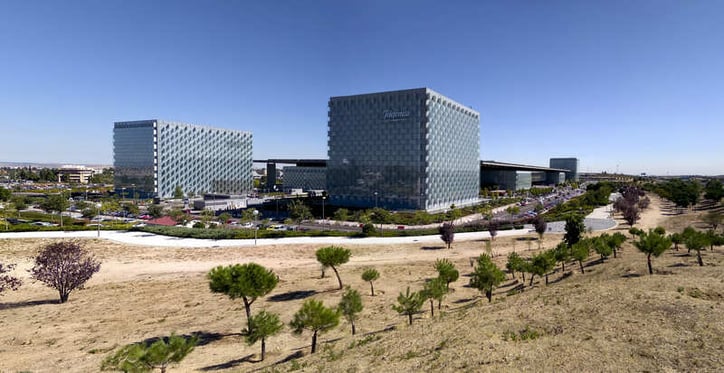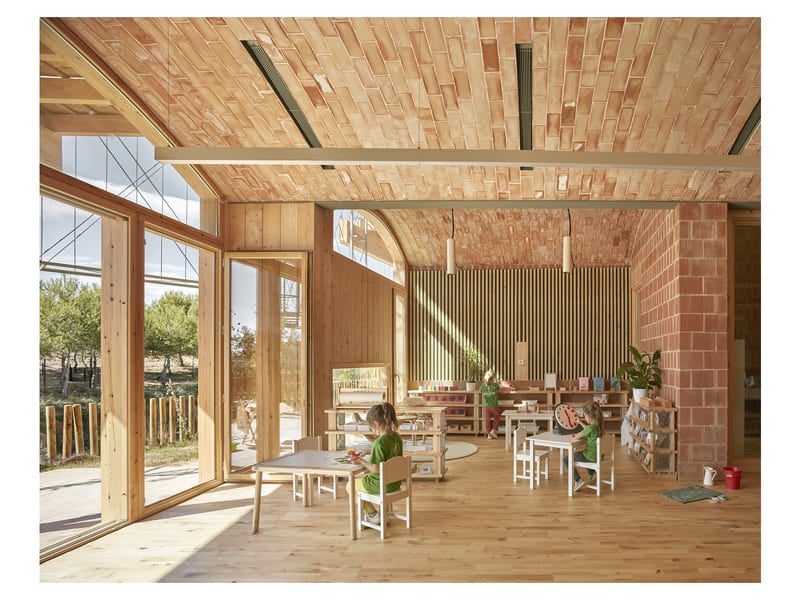Sustainable projects integrate sustainability into the design, also involving all parties. They are approached from an interdisciplinary perspective to ensure the best result.
A sustainable project integrates the concepts of sustainability from the beginning and during all stages of the construction project, in an integrated design process in which all visions are brought together. Among other benefits, it allows energy use to be reduced by more than 40 % compared to a conventional building. Next, we will see what characterizes sustainable projects and some examples of projects that have marked a before and after in the world.
What is a sustainable project? How to design sustainable buildings?
Sustainable projects are those that integrate sustainability concepts into the design of the building and throughout all phases of the project, allowing, among other things, to limit its energy demand. Sustainable buildings significantly reduce energy use and other resources compared to conventional ones. They can even supply the total demand if renewable energies are incorporated.
Likewise, constructing a sustainable building requires a compromise between the different parties - the different disciplines - involved in its design and construction. Designers, architecture and engineering, property, occupants, construction company... all have to participate in an integrated way in what we call the integrated design process.
The characteristics that make a sustainable building
A sustainable project integrates the environment and society during the design and execution of the construction project, while achieving economic viability. Sustainable buildings are designed with greater energy savings in mind, using renewable natural resources that do not compromise the environment and by analysing the life cycle of processes and materials.
Sustainable building projects create comfortable and healthy spaces that meet social needs while staying within budgetary constraints. Based on the pillars of sustainable architecture, the environmental, economic and social pillars:
- Optimisation or efficient use of resources and materials used.
- Reduction of the building's energy consumption and use of renewable energies.
- Reduction of waste and carbon emissions generated over the lifetime of the building.
- Reduced maintenance as well as operating and usage costs of the buildings.
- Increasing the well-being of its occupants as well as the quality of life of citizens.
Sustainable projects integrate the concepts of sustainability and involve all parties from the preliminary phases, to achieve synergies, reduce costs, and obtain the best results.
How to design a sustainable building? 3 examples of sustainable projects
A sustainable building goes beyond applying simple measures of renewable energy or ecological materials. Projects such as the Imagine Montessori school (Valencia), the first with BREEAM certification and VERDE certification, are a good example of this. With an automatic LED lighting system that adapts to the intensity and colour of natural lighting, it not only reduces energy consumption but also enhances visual comfort. A unique space, integrated in nature, with spacious classrooms connected to the outside.
.jpg?width=730&name=Montessori-F-09%20(1).jpg)
Minimize the environmental impact by reducing resources, using recycled materials, and working in an integrated manner from the beginning. All this means that there is a before and after in the way architecture is approached. We have moved from an old vision centred on the figure of architecture to a more interdisciplinary vision, where many more concepts are incorporated to work on projects from the beginning.
Terminal 4 at Madrid's Barajas airport is the largest project in the world —with more than 1 million square metres built— to incorporate bamboo as a sustainable material. Designed by Antonio Lamela in collaboration with Richard Rogers, T4 has energy and material efficiency very much in mind; its industrial design allows elements to be easily replaced, and the large linear courtyards optimise the entry of natural light.

For its part, the also Madrid-based Communications City by the architect Rafael de la Hoz, is the largest urban development complex made of glass in Europe. The choice of façades made of this material allows considerable savings in lighting and therefore in energy use. Telefónica's headquarters, the extensive solar protection and capture roof under which the complex of buildings is located houses 16,600 photovoltaic panels occupying 25,000 m2, one of the largest areas of solar panels on the continent.
These examples we have seen reinforce the idea of great sustainable projects that have been worked on from the beginning, bringing more value to sustainability. And the sooner the building project begins incorporating the principles and concepts of sustainability, the better the result will be. In short, we will achieve better results at lower costs.


